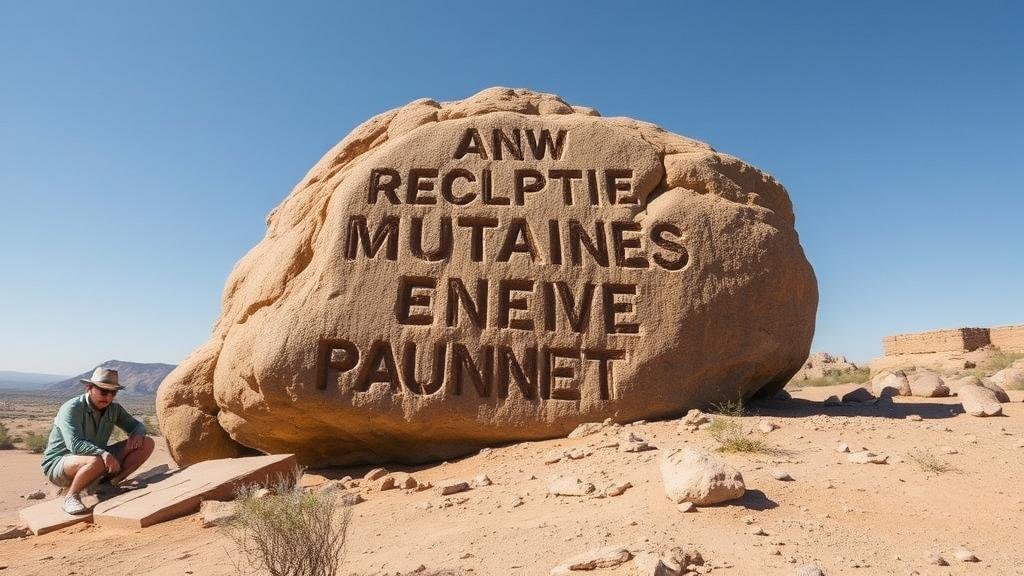Documenting cryptic messages carved into boulders deep within deserts.
Documenting Cryptic Messages Carved into Boulders Deep Within Deserts
The arid expanses of some of the world’s deserts hold numerous secrets, one of which lies in the ancient messages carved into boulders. These intriguing inscriptions offer a glimpse into the lives of those who inhabited these lands centuries ago. Documenting these cryptic messages is crucial not only for historical preservation but also for understanding the cultural significance behind them.
Historical Context
Many desert regions have been home to diverse civilizations throughout history, including Native American tribes and early European explorers. For example, the Petroglyph National Monument in New Mexico showcases rock art that dates back over 3,000 years, providing insights into the spiritual and daily lives of the Pueblo people.
Another notable example is the writings found in the Sahara Desert, where rock carvings known as Tassili nAjjer date back to 12,000 years ago. These carvings depict animals and human figures, suggesting a once-thriving ecosystem and intricate social structures.
Methodologies for Documenting Inscriptions
Documenting these inscriptions involves a systematic approach to ensure accuracy and preservation. Various methodologies have emerged that emphasize both technology and fieldwork:
- Photography: High-resolution images are essential for initial documentation. Techniques such as reflective lighting can enhance visibility of faded carvings.
- 3D Scanning: This method captures the dimensional quality of carvings, allowing for accurate reproductions and analyses.
- Field Surveys: Physical exploration of sites involves experienced archaeologists recording coordinates, environmental conditions, and the context surrounding the carvings.
- Community Engagement: Involving local communities in documentation efforts helps in gathering oral histories and cultural context surrounding the inscriptions.
Technological Innovations
Advancements in technology have significantly enhanced how researchers approach the documentation of desert inscriptions. Drones, for example, can provide aerial views of remote areas, making it easier to locate and access boulders that might be otherwise overlooked.
Plus, software programs equipped with artificial intelligence can analyze images and detect patterns not easily observed by the human eye. Techniques such as photogrammetry allow for the creation of 3D models; these models serve both educational and conservation purposes.
Preservation Efforts
Preserving these cryptic messages is critical, especially as natural erosion and human activity pose significant threats. Organizations, such as the Archaeological Conservancy, actively work to protect these historical sites through land acquisition and public awareness initiatives.
In recent years, efforts to create virtual digital archives have emerged, offering a sustainable method for keeping these incised histories accessible. For example, the Rock Art Archive at the University of Utah provides a comprehensive repository of rock art data, ensuring that even if physical sites deteriorate, the knowledge remains intact.
Challenges and Concerns
Despite advanced methodologies and preservation strategies, various challenges persist. Environmental factors, such as climate change, threaten the longevity of desert inscriptions. Rising temperatures and increased rainfall can accelerate erosion of carvings, literally washing away history.
Also, vandalism and illegal excavations pose significant risks. The case of the petroglyphs in Southern California highlights this issue, where carvings were defaced by graffiti, emphasizing the need for stronger legal protections and community intervention.
Conclusion
Documenting cryptic messages carved into boulders deep within deserts is a complex yet rewarding endeavor. By employing innovative technologies and methodologies, researchers aim to preserve these vital links to our past for future generations. value of these inscriptions extends beyond their artistic merit; they serve as historical narratives that enrich our understanding of human civilization.
Actionable Takeaways
- Support local initiatives dedicated to preserving desert archaeology.
- Engage in community outreach programs that educate the public about the significance of rock art.
- Advocate for policies that protect these cultural landscapes from development and vandalism.



